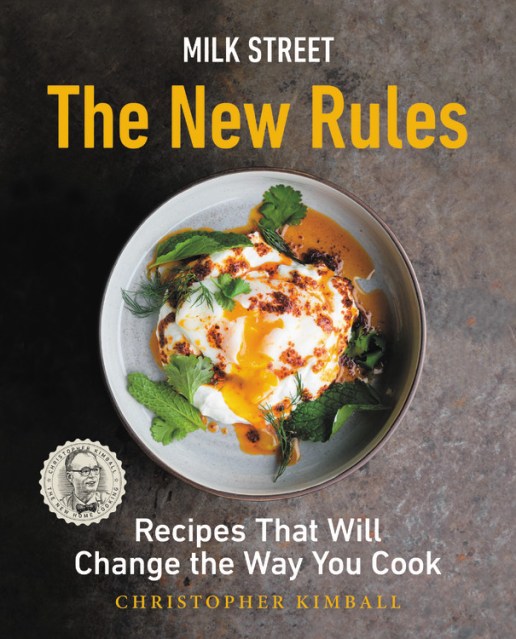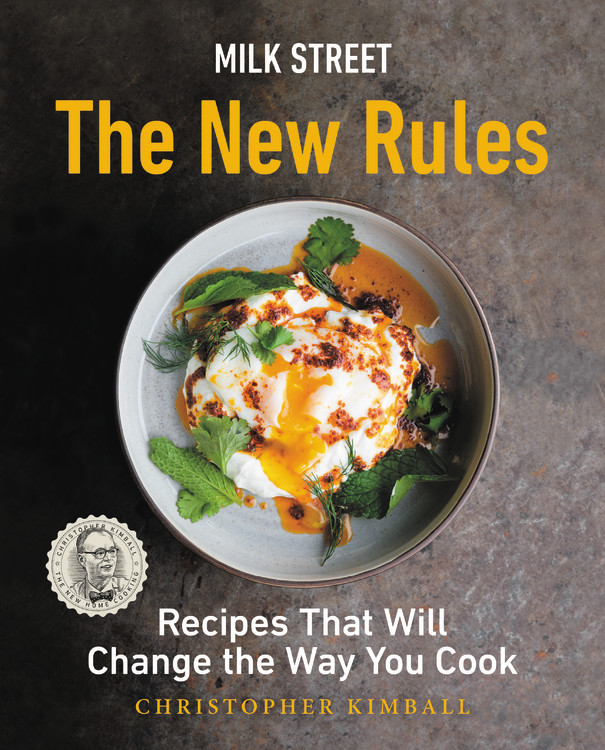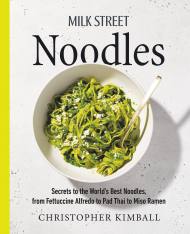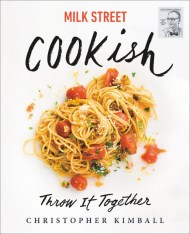Promotion
Use code MOM24 for 20% off site wide + free shipping over $45
Milk Street: The New Rules
Recipes That Will Change the Way You Cook
Contributors
Formats and Prices
Price
$35.00Price
$44.00 CADFormat
Format:
- Hardcover $35.00 $44.00 CAD
- ebook $16.99 $21.99 CAD
This item is a preorder. Your payment method will be charged immediately, and the product is expected to ship on or around October 15, 2019. This date is subject to change due to shipping delays beyond our control.
Also available from:
JAMES BEARD AWARD FINALIST AND WINNER OF THE IACP AWARD FOR BEST GENERAL COOKBOOK — Become the best cook you know with this playbook of new flavors, new recipes, and new techniques: Milk Street's New Rules, with 200 game-changing recipes driven by simple but transformative insights into cooking.
This revelatory new book from James Beard Award-winning author Christopher Kimball defines 75 new rules of cooking that will dramatically simplify your time in the kitchen and improve your results. These powerful principles appear in more than 200 recipes that teach you how to make your food more delicious and interesting, like:
- Charred Broccoli with Japanese-Style Toasted Sesame Sauce (Rule No. 9: Beat Bitterness by Charring)
- Lentils with Swiss Chard and Pomegranate Molasses (Rule No. 18: Don't Let Neutral Ingredients Stand Alone)
- Bucatini Pasta with Cherry Tomatoes and Fresh Sage (Rule No. 23: Get Bigger Flavor from Supermarket Tomatoes)
- Soft-Cooked Eggs with Coconut, Tomatoes, and Spinach (Rule No. 39: Steam, Don't Boil, Your Eggs)
- Pan-Seared Salmon with Red Chili-Walnut Sauce (Rule No. 44: Stick with Single-Sided Searing)
- Curry-Coconut Pot Roast (Rule No. 67: Use Less Liquid for More Flavor)
- Tenderize tough greens quickly
- Create creamy textures without using dairy
- Incorporate yogurt into baked goods
- Trade time-consuming marinades for quick, bright finishing sauces, and more
The New Rules are simpler techniques, fresher flavors, and trustworthy recipes that just work–a book full of lessons that will make you a better cook.
Genre:
-
ONE OF THE BEST COOKBOOKS OF THE YEARBuzzFeed, Chowhound, The Kitchn
-
"Guaranteed to make you a better cook... Simple techniques that will bring more flavor and better results to the table."Parade
-
"Simple but smart solutions to make cooking a bit easier -- like how to keep dressing from sliding off salads, or how to thicken sauces without adding cream."BuzzFeed
-
"All 200 recipes not only stand alone, but serve to illustrate one of 75 smart cooking rules and hacks that you'll be able to apply when you want to improvise in the kitchen. In the manner of all the best cookbooks, the idea is not just to tell you what to cook, but to teach you how to make meals your own."Chowhound
-
"A delightfully easy-to-follow cookbook with a bunch of little secrets -- 200 to be exact. These tips, tricks and techniques are perfect for the home cook who likes to know not only how to make food more delicious, but why a recipe works the way it does."The Mercury News (San Jose)
-
"This clever collection of savory dishes illustrates 75 rules, such as using copious amounts of herbs to amp up flavor or incorporating mashed potatoes into dough for a tender crumb... offers dishes that feel modern and international... [a] generous and accessible volume... loaded with information on ingredients... and countless useful tips. Plenty of I-never-thought-of-that-moments fill this enticing and instructive book.Publishers Weekly
-
"Highly recommend... Delicious recipes and sound techniques to improve and spice up everyday cooking routines."Library Journal
-
"Revises standard culinary practices, honoring time-proven techniques while abandoning rigid constraints... Dishes are light, bright, and vegetable-forward... Kimball's writing, unrivaled for clarity and precision, inspires confidence in every home cook."New York Journal of Books
- On Sale
- Oct 15, 2019
- Page Count
- 336 pages
- Publisher
- Voracious
- ISBN-13
- 9780316423052
Newsletter Signup
By clicking ‘Sign Up,’ I acknowledge that I have read and agree to Hachette Book Group’s Privacy Policy and Terms of Use







